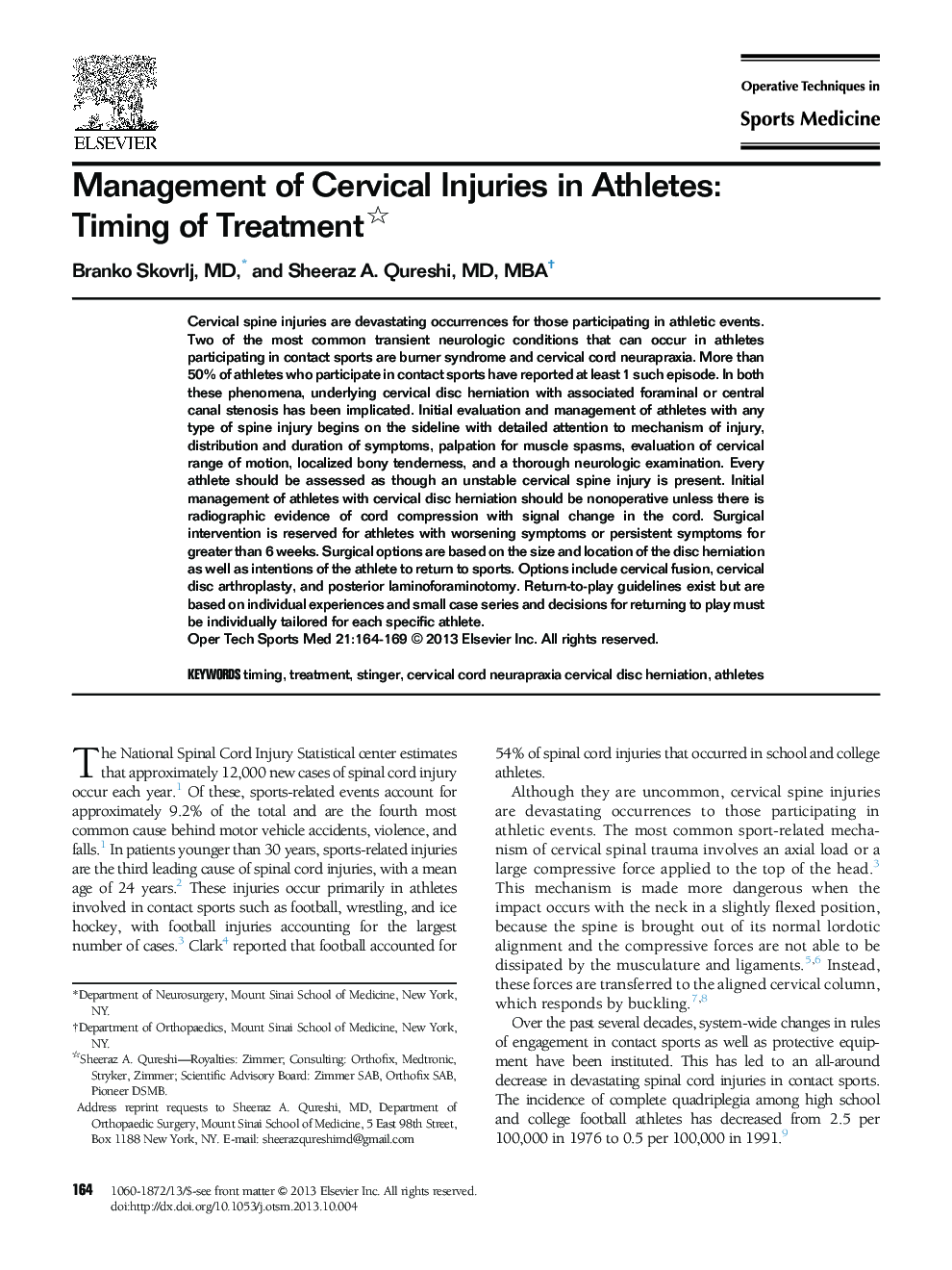| Article ID | Journal | Published Year | Pages | File Type |
|---|---|---|---|---|
| 4079651 | Operative Techniques in Sports Medicine | 2013 | 6 Pages |
Cervical spine injuries are devastating occurrences for those participating in athletic events. Two of the most common transient neurologic conditions that can occur in athletes participating in contact sports are burner syndrome and cervical cord neurapraxia. More than 50% of athletes who participate in contact sports have reported at least 1 such episode. In both these phenomena, underlying cervical disc herniation with associated foraminal or central canal stenosis has been implicated. Initial evaluation and management of athletes with any type of spine injury begins on the sideline with detailed attention to mechanism of injury, distribution and duration of symptoms, palpation for muscle spasms, evaluation of cervical range of motion, localized bony tenderness, and a thorough neurologic examination. Every athlete should be assessed as though an unstable cervical spine injury is present. Initial management of athletes with cervical disc herniation should be nonoperative unless there is radiographic evidence of cord compression with signal change in the cord. Surgical intervention is reserved for athletes with worsening symptoms or persistent symptoms for greater than 6 weeks. Surgical options are based on the size and location of the disc herniation as well as intentions of the athlete to return to sports. Options include cervical fusion, cervical disc arthroplasty, and posterior laminoforaminotomy. Return-to-play guidelines exist but are based on individual experiences and small case series and decisions for returning to play must be individually tailored for each specific athlete.
